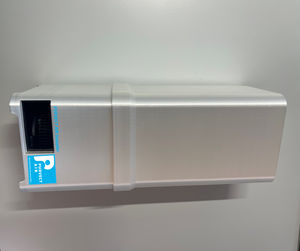

- Products
- Catalogs
- News & Trends
- Exhibitions
Wall-mounted air purification system UVfor healthcare facilitiesgermicidal
Add to favorites
Compare this product
fo_shop_gate_exact_title
Characteristics
- Configuration
- wall-mounted
- Technology
- UV
- Applications
- for healthcare facilities
- Other characteristics
- germicidal
Description
Filter systems and UV-C lamps are integrated in a separate and closed section of the ventilation system. After flowing through the absorption of the filters, certain ventilation systems also have additional UV radiation, the air is generally well purified and flows cleanly through the air outlets into the room, where the fresh air mixes with the existing air. By means of a correspondingly high air exchange rate, the proportion of fresh air to the existing air can be increased. However, perpetrators of pollutants, pathogens or foreign odors staying in the room are not prevented from continuing to do so.
The difference to alternative systems is that Purvection neutralizes the polluters at the root, regardless of whether they produce pollutants, germs or foreign odors.
On the one hand, this reduces the risk of infection by pathogens by 5,000 times and also reduces energy costs. According to current assumptions, the lack of absences at work due to illness will also be reduced in the long term.
What effective technologies are currently available to improve indoor air quality?
The main areas of application of UV-C radiation are surface disinfection, room air disinfection or water treatment.
Energy-rich UV-C radiation, like UV-B and UV-A, can have immediate (acute) health consequences that can only be seen later in life. Skin erythema (inflammation of the skin) or the conjunctiva of the eye (photoceatitis, photoconjunctivitis) as well as short-term eye lesions are evident as an acute reaction to UV-C radiation. In the long term, the genetic material, i.e. DNA, is damaged and thus damaged cells can degenerate into cancer cells.
*Prices are pre-tax. They exclude delivery charges and customs duties and do not include additional charges for installation or activation options. Prices are indicative only and may vary by country, with changes to the cost of raw materials and exchange rates.

